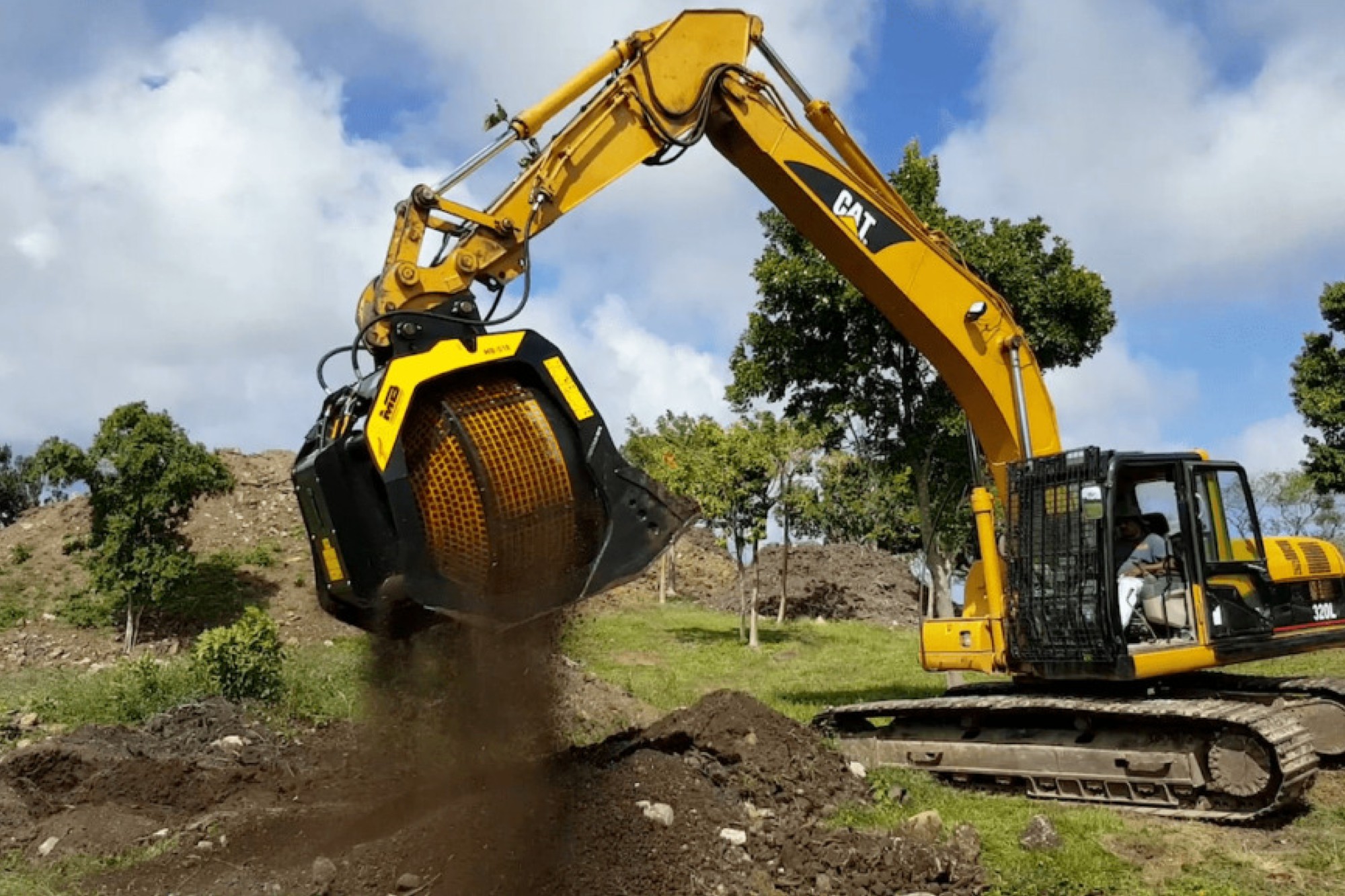If we continue to deteriorate topsoil at our current rate, the globe will run out of it in approximately 60 years.
The European Parliament took the first steps towards preservation with the passage of the Nature Restoration Law (NRL), a regulation that calls for the restoration of at least 30% of natural habitats and the expansion of urban green spaces by 2030.
What impact do construction sites have in preserving the soil?
The removal of topsoil to allow for infrastructure construction is common practice. Excavated soil is typically classified as waste, although it is no longer considered waste once it has been entirely recovered. Recycling and reusing soil becomes critical not only to avoid costs connected with disposal and the prospective repurchase of fresh material, but also to minimise soil contamination with materials from other sources.
Material handling becomes easier, more sustainable, and time-efficient when MB Crusher attachments are installed on heavy equipment that is already on-site.
Invasive weeds leave Versailles
At the western end of the Château de Versailles in France, just on the border of the Gally Gardens, a 20,000-pound Mecalac excavator works in the materials storage warehouse. An MB-S10 Screening Bucket is mounted at the end of the boom. “We needed to sift the excavated material to gather soil and compost to arrange the flower beds and lawns of the Gardens – says Joël Fauvel, Deputy Director of the Department of Gardens of Trianon and Marly – Before our gardeners had to manually load the excavated soil on a mechanical sieve mounted on a frame. Now with the MB Crusher Screening Bucket, separating the materials is much easier and faster.”
The most significant point, explains Fauvel, is that the soil treated with the MB Screening Bucket is of higher quality because it includes less weed roots, and purity is required to be reusable. Now, the soil that returns to the ground is significantly cleaner.
Returning to your point of origin. There could be up to 9 miles of trenches to fill with the development of aqueducts and sewage networks in El Porvenir, a tiny Peruvian village. Using the same excavated material for bedding benefits the construction site and, more crucially, the ecology. Processing wet excavated material during the rainy season might be difficult. The problem was handled by putting an MB Crusher MB-HDS212 Padding Bucket on an existing Bobcat mini-excavator on the job site. The benefits include no need to purchase infill materials, no need to go to and from the construction site via truck, and the removed dirt returns to its original location clean.
Everything is locally supplied. During excavation, dirt is frequently combined with branches, stones, roots, and other “contaminating” items. Why send everything to the landfill? The MB-HDS Padding Bucket allows you to easily and rapidly extract pollutants from the soil and then reuse it. In Germany, a construction site had the same issue: the nearest landfill was 22 miles distant, resulting in increased time and expenditures. The issue was resolved by screening the material with an MB-HDS207 Padding Bucket to separate the soil from the stones and roots.
The environment behaves similarly to an organism, with a single local intervention having far-reaching implications for the entire system. If this balance is upset, the entire system could be destroyed. How can I help? Simply processing excavated earth with MB Crusher equipment to produce “clean” soil simplifies on-site operations and helps to safeguard the environment. All you have to do is use the existing equipment on the project site.
For more information, visit: https://vimeo.com/924957920
Cookie Consent
We use cookies to personalize your experience. By continuing to visit this website you agree to our Terms & Conditions, Privacy Policy and Cookie Policy.





















